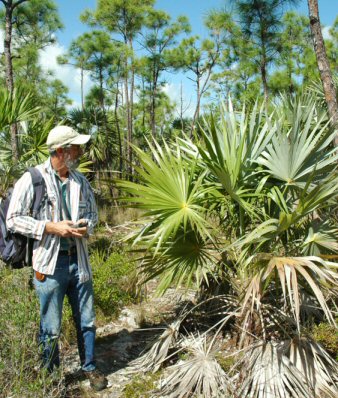 Botanic Gardens increasingly work to ensure the conservation of endangered plants. Montgomery Botanical Center is no exception, and MBC plant collections have been structured to maximize conservation value. But how effective is this work — are plants being conserved?
Botanic Gardens increasingly work to ensure the conservation of endangered plants. Montgomery Botanical Center is no exception, and MBC plant collections have been structured to maximize conservation value. But how effective is this work — are plants being conserved?
A recent paper in the journal Biological Conservation evaluates the success of the methods used by MBC to conserve genetic diversity through living plant collections. This study used an extensive living collection of a palm species, Leucothrinax morrisii, as a model system to evaluate botanic garden conservation. The living collection was the result of a single collecting event from a single population on Big Pine Key in 1998. Thus, this group of palms provided sufficient depth to evaluate optimium collection size for a single population.
The project team revisited the original population, and compared the genetic diversity of the collection and the population. The resulting data was used to model the most effective sample size to conserve genetic diversity.
The results of the work demonstrate that in this case, maintaining a collection of at least 15 plants succeeds in conserving at least 80% of the diversity in the wild population. Increasing the number of plants in the collection further will increase the conservation value of the collection, but diminishing returns are seen at higher collection sizes. The effect of collecting from separate mother plants was also positive, but was less significant than simply increasing the number of plants. This information can be of help for planning conservation work for palms and other plant groups.
Funding for this study was awarded by the International Palm Society. The study, led by Patrick Griffith of MBC, was performed in collaboration with researchers at Florida International University and Fairchild Tropical Botanic Garden — Sandra Namoff, Javier Francisco-Ortega, and Carl Lewis — in addition to MBC’s Larry Noblick and Chad Husby.
